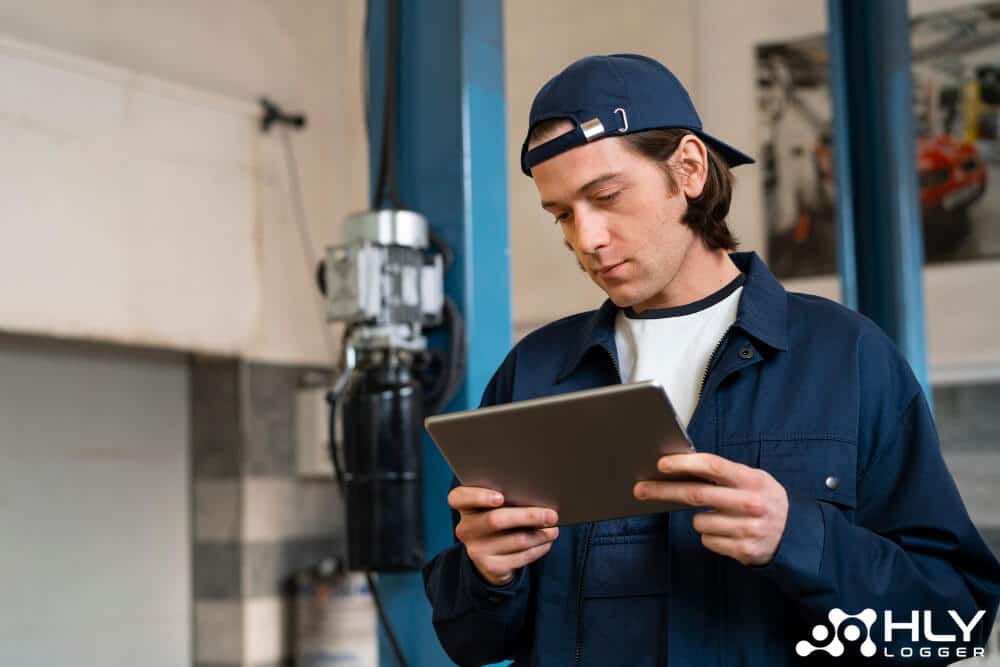In the industrial world, energy efficiency is one of the main priorities for maintaining operational sustainability and reducing environmental impact. One effective approach is to utilize energy-efficient monitoring. This technology monitors energy consumption, identifies areas for improvement, and optimizes energy use, which can also reduce operational costs. In industry, technology is widely used to support business processes.
Contents
All about Energy-Efficient Monitoring
Energy-efficient monitoring refers to the process of tracking and analyzing energy use in a system to ensure that energy is used optimally. The system collects data on energy consumption from various devices and systems.
The next stage processes this information and provides valuable recommendations or reports for reducing energy waste. This enables companies to make more informed decisions to improve energy efficiency—not only saving energy but also reducing carbon emissions.
Implementing energy-efficient monitoring involves various technologies that enable companies to monitor and manage energy use in real time. Key components of the energy monitoring system include metering devices and smart sensors.
Meters are installed at various points in industrial facilities to monitor energy use at a basic level—for example, on machines, lights, or HVAC (heating, ventilation, and air conditioning) systems. Sensors detect energy consumption in real time and send data to an energy management system for analysis. These sensors are often integrated as part of IoT (Internet of Things) technology.
Internet of Things (IoT) Technology:
IoT connects devices so they can communicate with each other and provide accurate data on energy usage. For example, machines and electrical devices equipped with IoT sensors can send information about their energy status and consumption to a centralized monitoring system. This connectivity allows for more efficient monitoring and automatic adjustments to devices to maximize energy efficiency. The ability to analyze data is further supported by big data and analytics technology.
Big Data and Advanced Analytics:
Using big data in energy-efficient monitoring enables the collection and simultaneous analysis of energy consumption data from various sources. This technology provides deeper insights into energy usage patterns and identifies areas of energy waste, allowing for more targeted and efficient energy system improvements. Furthermore, advanced technologies such as Artificial Intelligence (AI) and Machine Learning can be employed to predict future energy usage trends based on existing patterns and offer more precise suggestions on when and how to optimize energy usage. AI can also support the setup of automated systems that dynamically adjust device operations to avoid energy waste.
How Energy-Efficient Monitoring Works
The process involves a series of organized stages to ensure that energy consumption in industrial facilities is controlled effectively:
- Installation:
Meters and sensors are installed at various points within an industrial facility. - Data Collection:
Real-time data is collected, with the management platform capturing this data for further analysis. - Analysis:
The collected data is analyzed to identify energy consumption patterns and pinpoint areas with high energy use, allowing for an assessment of overall operational efficiency. - Decision-Making and Implementation:
Based on the analysis results, decisions can be made—whether to implement corrective measures, update lighting systems, replace equipment with more efficient models, or rearrange operational schedules to use energy more appropriately. - Ongoing Monitoring:
Energy-saving measures require regular monitoring to ensure they deliver the desired results, and further adjustments may be necessary to continuously improve energy efficiency.
Benefits of Energy-Efficient Monitoring in Industry
Implementing energy-efficient monitoring offers significant benefits for companies, particularly in reducing energy consumption and operational costs. With such a system, companies can:
- Identify waste points and take action to reduce unnecessary energy use.
- Optimize operational schedules to increase productivity and efficiency.
- Monitor system performance and detect decreases in efficiency or device failures quickly, enabling prompt corrective actions that reduce downtime and losses caused by energy disruptions.
Companies that successfully implement energy-efficient monitoring and minimize energy consumption tend to enjoy a competitive advantage in the market.
Our Offering
Implementing energy-efficient monitoring can be effectively achieved using IoT technology. We provide equipment support for various needs. HLY Technology Co. offers professional IoT devices for business process monitoring in the food, pharmaceutical, and chemical sectors.
Since 2011, we have been developing data logger solutions using technologies such as GSM, Zigbee, LoRa, and NB-IoT. Our main focus is on device innovation for automatic monitoring with OEM/ODM services and IoT cloud platforms that support energy saving while being environmentally friendly. One of our leading products is the M502-TH USB Reusable Temperature and Humidity Data Logger.
The M502-TH is a temperature and humidity monitoring device ideally suited for storage and transportation in cold chain logistics—covering industries such as food, pharmaceuticals, and chemicals. It features a digital sensor capable of recording temperatures from –30℃ to 70℃ and measuring humidity from 0% RH to 100% RH, with a memory capacity of 14,400 readings. The device automatically generates encrypted PDF reports and supports data export via USB.
With long-lasting battery support, this device is suitable for long-term applications in cold chain logistics and warehouse management. Apply energy-efficient monitoring for a more energy-efficient, environmentally friendly, and sustainable industrial future.

